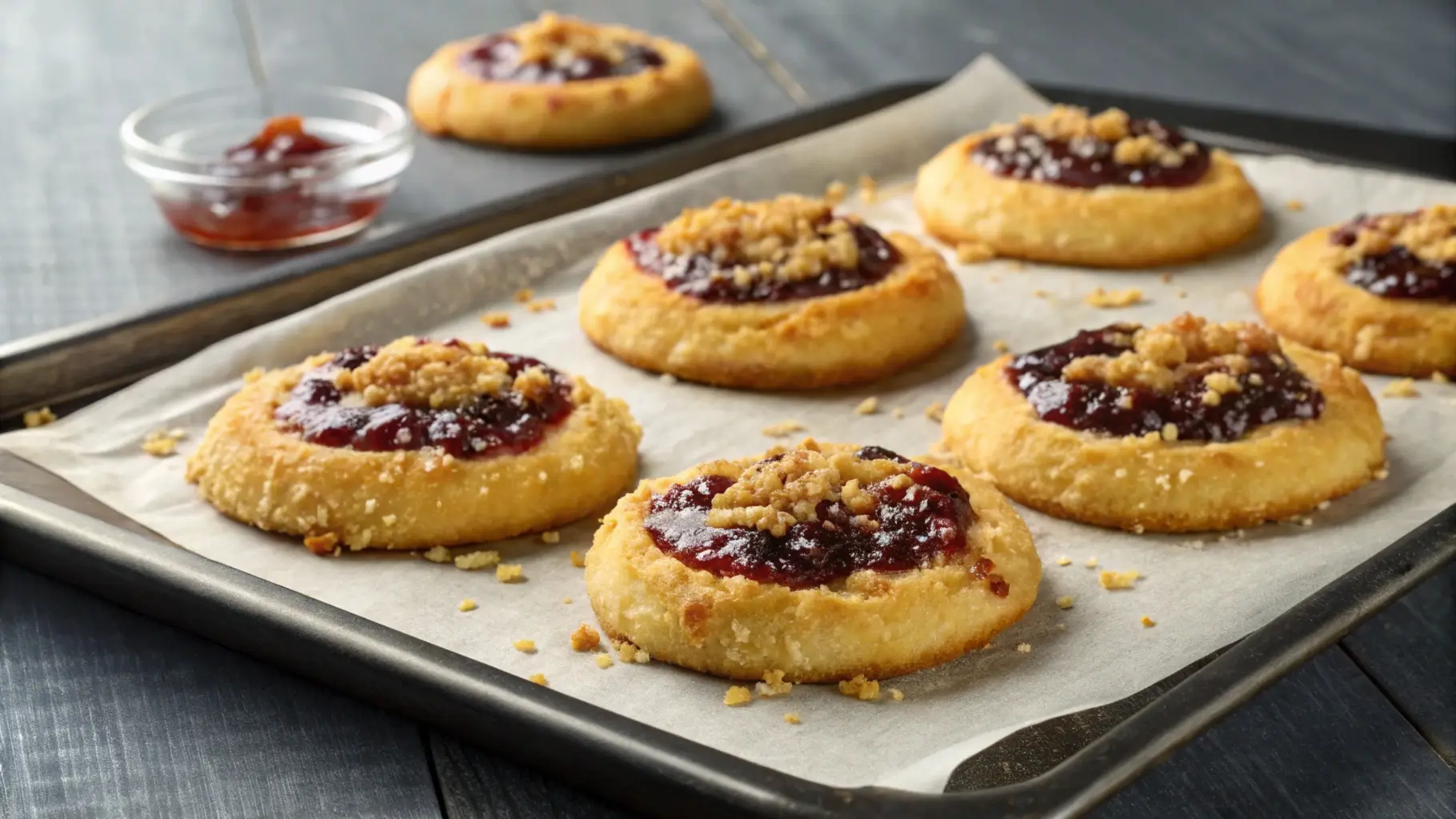Czech desserts are more than just a sweet finish to a meal—they’re a cultural tradition. Made with simple, fresh ingredients like local fruits and dairy, these treats have been passed down for generations. Whether it’s a rich pastry or a fruit-filled delight, Czech desserts offer a taste of history and culture. Once you try one, you’ll see why they’re so loved in Czech homes!
Popular Czech Dessert Recipes
When it comes to Czech desserts, there are a few classics that you just can’t skip. These recipes have stood the test of time and are loved by locals and visitors alike. Let’s dive right in!
Koláče: Traditional Czech Pastries
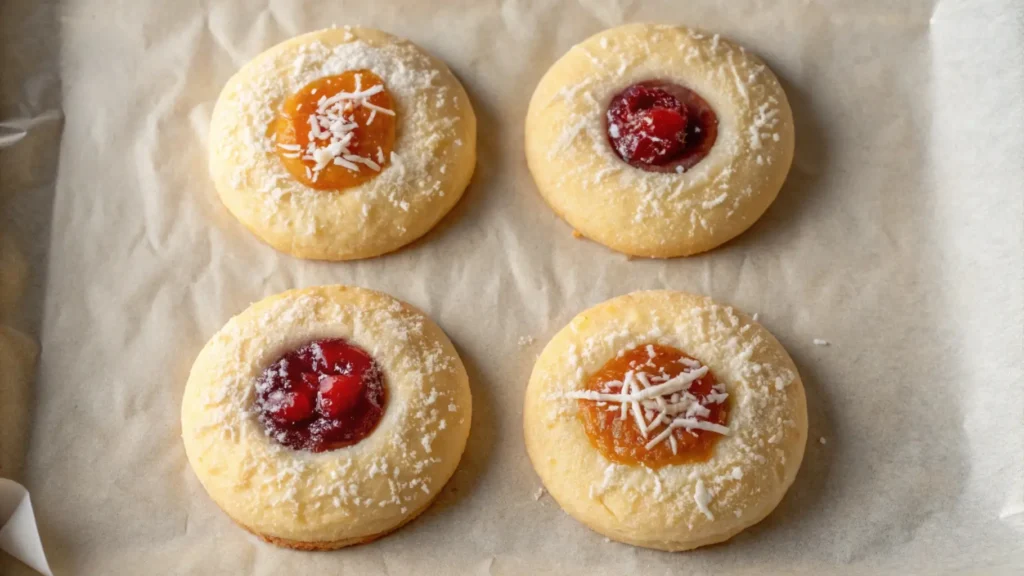
Koláče (pronounced “ko-lah-cheh”) are probably one of the most iconic Czech pastries. These sweet, round dough buns are filled with a variety of fruits, sweet cheese, or poppy seeds. Often made for special occasions or holidays, Koláče have a light, fluffy texture that’s just the right amount of sweetness. Honestly, one bite of these, and you’ll be hooked! Fun fact: These treats were traditionally baked by Czech mothers and grandmothers, and they’ve become a symbol of hospitality and warmth.
Trdelník: Sweet Pastry and Its Historical Roots
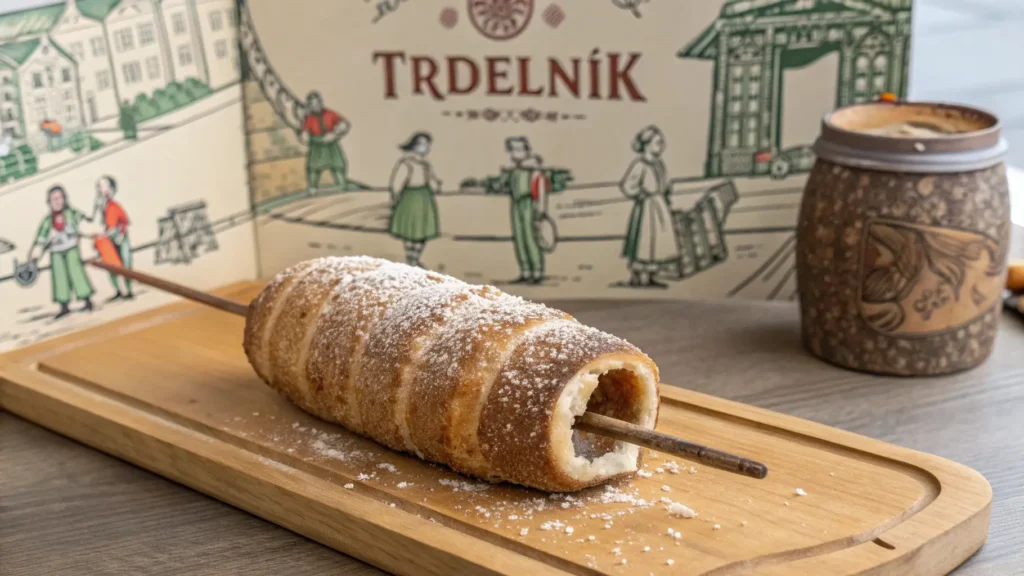
Now, if you’ve ever visited Prague, you’ve probably encountered the sight of Trdelník being cooked over an open flame. This sweet pastry is a bit of a showstopper, and honestly, it’s as delicious as it looks! Traditionally, Trdelník is made from dough that’s wrapped around a wooden stick, then roasted and coated with sugar and walnuts. The crispy, golden crust and soft, warm interior make it an unforgettable treat. Trdelník’s roots are believed to go all the way back to Hungary, but the Czech version has become a staple street food, particularly during the summer months.
Czech Apple Strudel: A Timeless Favorite
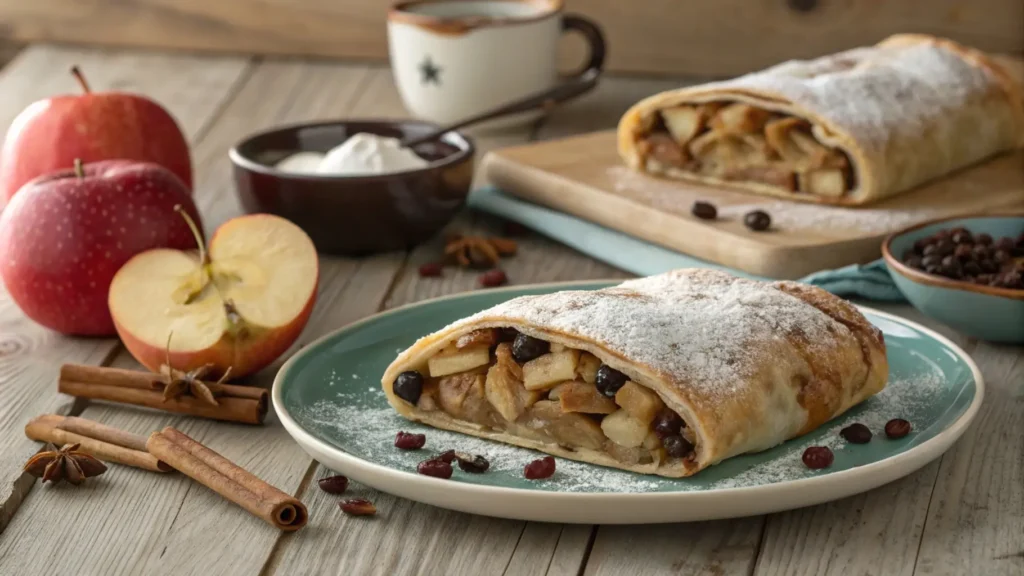
Czech Apple Strudel is another beloved dessert that’s been enjoyed for centuries. Made with thin, delicate pastry layers and a filling of tart apples, cinnamon, sugar, and sometimes nuts, this strudel offers the perfect balance of sweetness and spice. Trust me, when you take a bite, it’s like tasting a piece of history. If you’re not a fan of overly sweet desserts, this one might just be your new best friend!
Czech Cakes and Pastries
Czech cakes and pastries are not only delicious but also often quite sophisticated in their flavors and textures. These treats bring together rich flavors with a touch of elegance.
Sacher Torte: A Famous Dessert in Czech Republic

If you’ve never had Sacher Torte, you’re missing out! Although originally from Vienna, the Czech version of this famous chocolate cake is just as beloved. The cake consists of layers of rich chocolate sponge, apricot jam, and a glossy chocolate glaze. It’s typically served with a dollop of whipped cream, which, let me tell you, really takes it to the next level. A slice of Sacher Torte is like an invitation to experience a little piece of European luxury.
Bábovka: A Classic Czech Cake
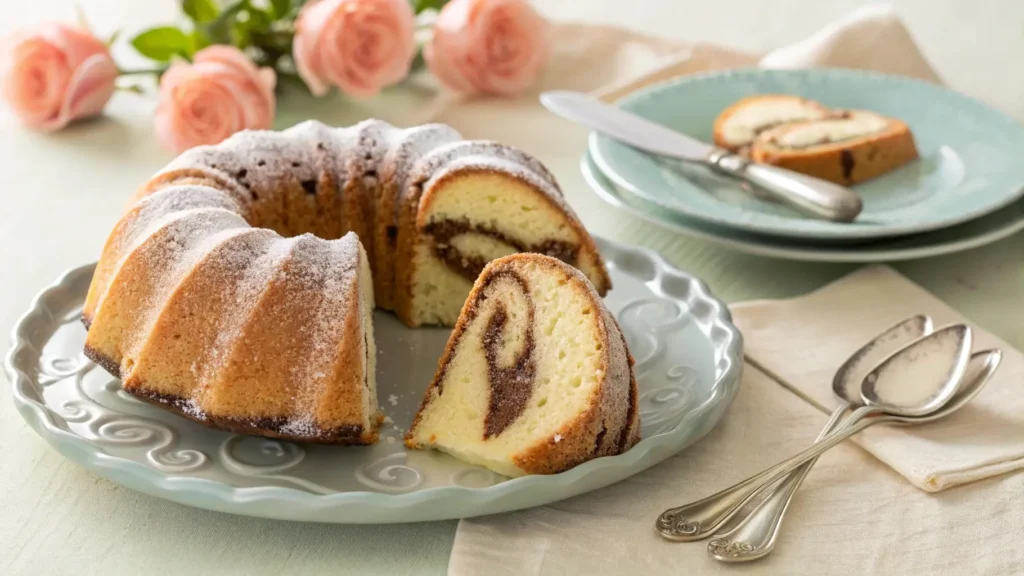
When you’re talking about Czech cakes, you can’t forget Bábovka. This traditional bundt cake is a household favorite in Czech homes, often made with ingredients like cocoa, nuts, and a little bit of rum for that perfect warm, comforting flavor. Each family has their own spin on the recipe, and you’ll find it baked for everything from Sunday dinners to birthday celebrations. It’s the kind of cake you’ll want to serve alongside your coffee and enjoy with friends and family.
Czech Cookies and Biscuits
Czech cookies are tiny, but they sure pack a punch in flavor. These little bites of sweetness are perfect for any time of day, especially when paired with a cup of tea or coffee.
Linecké cukroví: Czech Holiday Cookies

When Christmas rolls around in the Czech Republic, you’ll see Linecké cukroví everywhere. These delicate, buttery cookies are typically made with jam in the center and dusted with powdered sugar. They’re so pretty that they could be the star of any holiday cookie tray, and honestly, once you pop one in your mouth, you’ll understand why they’re a holiday staple.
Czech Koláče (Small Pastries)
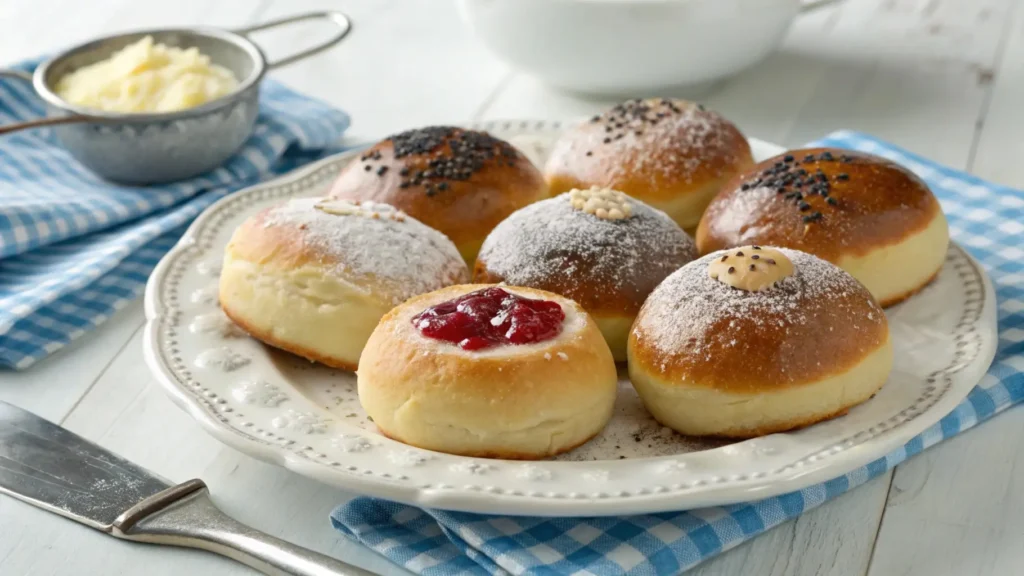
Although we mentioned Koláče earlier, let’s give a shout-out to the small, bite-sized versions of these pastries. They’re perfect for any occasion, whether it’s a family gathering or a coffee break. Packed with jam, cheese, or fruit fillings, these mini Koláče are perfect for snacking or sharing with friends.
The Role of Fruit in Czech Desserts
Czech desserts love fruit. Whether it’s apples, berries, or plums, fresh fruit is used in many of the country’s beloved recipes. These fruits bring not only vibrant colors but also refreshing flavors that perfectly complement the sweetness of the desserts.
Apple-Based Desserts: Strudel and Beyond
Apple-based desserts are definitely a staple in Czech kitchens. While the famous Apple Strudel takes center stage, there are many other delightful apple treats that are commonly made, like apple cakes and pies. The tartness of the apples balances out the sweetness of the desserts, making them just the right amount of indulgent.
Berries in Czech Desserts
You can’t talk about Czech desserts without mentioning berries. From strawberries to raspberries, berries are frequently used in everything from cakes to jams to pastries. In fact, many Czech desserts highlight the natural sweetness and tanginess of berries, making them a refreshing choice, especially in the summertime.
Essential Ingredients for Czech Desserts
To make Czech desserts at home, you’ll need a few essential ingredients that are staples in most Czech kitchens. The simplicity of these ingredients is what makes these desserts so approachable and enjoyable to bake.
Flour, Butter, and Eggs: The Core of Czech Pastries
Flour, butter, and eggs are the foundation of many Czech pastries. These ingredients create the base for everything from Koláče to cakes, offering a rich, tender texture. If you’re going to bake Czech desserts, make sure you have high-quality butter and fresh eggs to get that melt-in-your-mouth goodness.
Fresh Fruit and Cream in Czech Desserts
Fresh fruit and cream play a big role in many Czech desserts, adding freshness and richness. Whether it’s the creaminess of whipped cream on top of a slice of cake or the fruit fillings in pastries, these ingredients bring a natural, wholesome flavor to each treat.
Czech Dessert Flavors and Textures
Czech desserts have a flavor profile that’s both simple and satisfying. Expect a lot of sweetness, but with layers of fruity, nutty, and buttery notes that keep things interesting.
Sweet, Fruity, and Nutty: Czech Flavor Profile
The combination of sweet, fruity, and nutty flavors is a signature of Czech desserts. From rich chocolate cakes to fruity jams and nutty pastries, each bite offers a different flavor experience. It’s a balanced profile that never feels too overwhelming but still satisfies every sweet tooth.
Textures of Czech Desserts: Crispy, Soft, and Creamy
Czech desserts aren’t just about flavor—they also offer a variety of textures. Whether it’s the crispy edges of a Koláč, the soft, fluffy interior of a cake, or the creamy filling of a strudel, Czech desserts offer a delightful mix of textures that keep every bite interesting.
Baking Techniques for Czech Desserts
Baking Czech desserts is all about mastering a few key techniques that make these treats stand out. Whether you’re making Koláče, strudel, or cakes, getting the basics right is crucial. Don’t worry—I’ve got you covered with all the tips you need to perfect your Czech baking skills!
How to Perfect Dough for Czech Pastries
If you’re planning on making traditional Czech pastries, the dough is the star of the show. To get that light, airy texture, you’ll need to treat the dough with care. When working with dough for Koláče or any other pastries, it’s essential to let it rest. Trust me, I know it’s tempting to rush things, but patience is key. Knead the dough until it’s smooth, then let it rise for at least an hour, so it gets nice and fluffy. And here’s a pro tip: If you’re using yeast, make sure the water isn’t too hot, or it’ll kill the yeast and your dough won’t rise properly.
Tips for Baking Traditional Czech Desserts
Baking Czech desserts isn’t rocket science, but there are a few things that make a big difference in getting that perfect, bakery-style finish. First, always preheat your oven—no exceptions. A hot oven ensures your pastries and cakes bake evenly. Second, if you’re making something like Trdelník, watch the cooking time carefully. You want that perfect golden brown on the outside, but soft and fluffy on the inside. Finally, don’t be afraid to get creative with fillings—Czech desserts love to be filled with jam, fruit, and cream, so go ahead and mix up flavors to find your perfect combo.
Czech Desserts for Special Occasions
Czech desserts are a big deal during the holidays and special events. Whether it’s Christmas, Easter, or a wedding, you’ll find plenty of sweet treats to celebrate with. These desserts not only taste amazing but also bring people together, so they’re perfect for any gathering.
Desserts for Christmas in Czech Republic
When it comes to Christmas, Czech families go all out with dessert. You’ll find everything from rich, nutty cakes to delicate cookies. Linecké cukroví (holiday cookies) are a must-have, often shared with friends and family. Other favorites include Christmas strudels, sweet pastries, and traditional Czech honey cake called Medovník. The holidays just wouldn’t be the same without these sweet, comforting desserts, and they’re often made ahead of time, so the whole family can enjoy them together.
Czech Desserts for Easter and Weddings
Czech desserts also play a big role in Easter and weddings. For Easter, you’ll find bright, fruity cakes and cookies, often with a lemony twist. Wedding cakes are usually elaborate, with layers of creamy fillings and rich flavors, reflecting the importance of the occasion. The wedding cakes might feature everything from chocolate ganache to fruit fillings, and they’re often decorated beautifully, adding a personal touch to the celebration.
Healthy Czech Dessert Alternatives
Looking to make some lighter versions of your favorite Czech desserts? No worries—there are plenty of ways to enjoy these treats without the guilt. Whether you’re watching your sugar intake or just want to try something a little healthier, these alternatives are a win.
Lightened-Up Czech Desserts for Health-Conscious Bakers
There are plenty of ways to enjoy Czech desserts in a lighter way. You can swap out heavy ingredients for healthier options, like using whole grain flour instead of white flour or substituting applesauce for butter. For cakes and pastries, using less sugar or a sugar substitute like stevia can help cut down on the sweetness while still delivering that classic flavor. It’s all about balancing taste and nutrition, so don’t be afraid to experiment and adjust recipes to your liking!
Vegan and Gluten-Free Czech Options
For those with dietary restrictions, there are plenty of gluten-free and vegan Czech dessert options to try. You can make gluten-free Koláče by using a good gluten-free flour blend, or even bake a vegan Bábovka by swapping out eggs and butter for plant-based alternatives. It’s all about finding the right substitutions to keep those traditional flavors without compromising your dietary needs. The best part? These gluten-free and vegan desserts taste just as delicious as the originals, so everyone can enjoy a sweet bite of Czech tradition.
Pairing Drinks with Czech Desserts
A Czech dessert is never truly complete without a drink to go with it. Whether you’re pairing it with a rich coffee or a glass of dessert wine, there are plenty of ways to elevate your dessert experience. (And yes, I promise I won’t use the word “elevate” again, haha!)
Czech Dessert Coffees
When you’re enjoying Czech desserts, a traditional Czech coffee is always a great option. Czech coffee tends to be strong and bold, which pairs perfectly with the richness of desserts like Sacher Torte or Bábovka. As for dessert wines, the Czech Republic is known for its sweet, fruity wines, especially from regions like Moravia. A glass of sweet white wine is the perfect companion to fruity pastries like strudel or Koláče.
The Art of Pairing Desserts with Czech Beverages
Pairing Czech desserts with drinks is a real art. A good rule of thumb is to match the richness of the dessert with the intensity of the drink. For example, a buttery pastry like Trdelník goes great with a light, crisp Czech beer, while something rich like Sacher Torte is better with a glass of sweet dessert wine. When in doubt, a hot cup of coffee never goes wrong!
Czech Desserts and Their Global Influence
Czech desserts have made their way around the world, spreading the deliciousness far and wide. From European bakeries to cafes in America, Czech pastries have earned a spot in kitchens everywhere.
Czech Pastries’ Popularity Worldwide
From the famous Koláče to the beloved Trdelník, Czech pastries are becoming increasingly popular worldwide. Their distinct flavors and textures have caught the attention of food lovers everywhere. In fact, you can find Czech-style pastries in bakeries across Europe and even in cities like New York or London. People love these desserts not only for their flavor but also for the cultural history they carry.
International Variations of Czech Desserts
Over time, many Czech desserts have evolved and adapted to different countries. For example, the Sacher Torte, originally from Austria, is just as popular in the Czech Republic, and its variations can be found worldwide. Likewise, Trdelník has been modified in other countries, with some versions even stuffed with ice cream for a modern twist. It’s amazing how Czech desserts have traveled and transformed globally, yet still stay true to their roots.
The Future of Czech Desserts
Like many other culinary traditions, Czech desserts are evolving. Bakers are finding new ways to interpret the classics while keeping the heart and soul of these desserts intact.
Innovations in Czech Dessert-Making
Czech pastry chefs are starting to experiment with new techniques, flavors, and ingredients. From using local, organic produce to trying out modern baking techniques, these innovations are bringing Czech desserts to the next level while still respecting tradition. We’re seeing more contemporary twists on classics, like vegan versions of traditional pastries or gluten-free takes on iconic cakes.
How Modern Bakers Are Reinterpreting Traditional Czech Desserts
Modern bakers are reimagining Czech desserts by adding their own creative flair. Some are playing with flavors and textures that you wouldn’t normally find in a traditional Czech pastry, like incorporating exotic spices or alternative sweeteners. But no matter how much the recipes change, the heart of Czech desserts remains the same: they’re all about comfort, flavor, and bringing people together.
How to Serve Czech Desserts
So, you’ve baked your Czech desserts—now, how do you serve them? Presentation is key, especially when you want to share these beautiful, intricate desserts with friends and family.
Presentation Tips for Czech Pastries
When serving Czech pastries, presentation is key! A beautiful dessert table can turn any meal into a special occasion. For pastries like Koláče or Trdelník, consider serving them on a rustic wooden board or platter for that authentic, homemade feel. For cakes, think about adding a dusting of powdered sugar or a drizzle of chocolate to make them look even more inviting.
Serving Czech Desserts in the Modern Kitchen
In the modern kitchen, it’s all about making Czech desserts accessible and easy to serve. If you’re hosting a gathering, you can pre-slice cakes and pastries, placing them in small portions for easy sharing. And don’t forget the drinks! Pairing your Czech dessert with a delicious beverage can turn your dessert time into a truly memorable experience.
Frequently Asked Questions about Czech Desserts
What kind of flour is used in Czech desserts?
In Czech baking, all-purpose flour is commonly used for most pastries and cakes. However, for certain recipes like Koláče, you may want to use a combination of all-purpose flour and some bread flour for a slightly denser dough. It helps give that perfect rise and texture.
Can I substitute butter in Czech desserts?
Butter is a key ingredient in many Czech desserts, like cakes and pastries. While you can substitute it with margarine or vegetable oil, the flavor and texture might change a little. For a more authentic taste, I recommend sticking with butter, especially in traditional recipes.
Are Czech desserts very sweet?
Czech desserts tend to have a balanced sweetness, not overly sugary. Many traditional desserts, such as Koláče and Bábovka, are sweet but not in an overpowering way. The sweetness often comes from fruit fillings, jam, or a light dusting of powdered sugar.
Simple Kefir Sheet Cake Recipe Card
A quick, easy recipe for a classic kefir sheet cake. For more information, visit this Simple Kefir Sheet Cake Recipe Card
Easy Kefir Sheet Cake Recipe Card
A simple version of the kefir sheet cake, perfect for beginners. For more information, visit this Easy Kefir Sheet Cake Recipe Card
Chocolate Chai Kefir Cake
A delicious twist on the kefir cake with rich chocolate and warming chai flavors. For more information, visit this Chocolate Chai Kefir Cake
Conclusion
Czech desserts are a delightful blend of tradition and flavor, from Koláče to strudels and cakes. They’re simple, comforting, and perfect for sharing with loved ones. Whether you’re a beginner or experienced baker, these desserts are fun to make and taste just like home. So, get baking and enjoy the sweet magic of Czech pastries—one treat at a time! For more recipes, visit this Zenrecipes.net.

